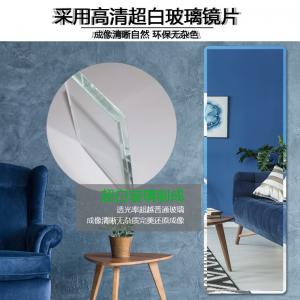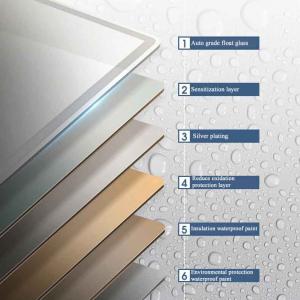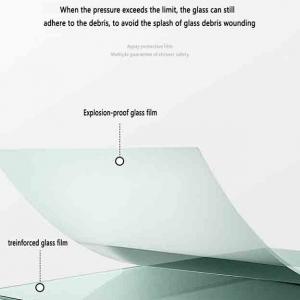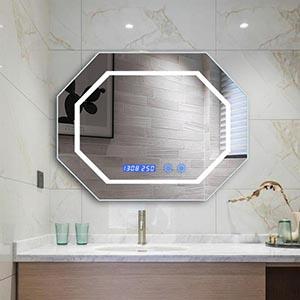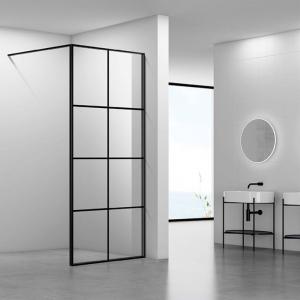Mirror Coating Peeling? How to Judge Coating Quality When Buying
Mirror Coating Peeling? How to Judge Coating Quality When Buying
Imagine unpacking a shipment of mirrors for a luxury retail space. You hang them, step back, and smile—they look perfect. But three months later, a customer points out a flake of silver along the edge. By six months, more flakes fall, leaving patchy, ugly spots. The client demands replacements. Your profit margin vanishes, and your reputation takes a hit.
If you source mirrors for commercial or residential projects, coating peeling is more than a nuisance—it’s a crisis. The thin metal coating (usually silver or aluminum) that makes a mirror reflective is its most critical feature. When it peels, bubbles, or discolors, the mirror becomes useless. Yet too many buyers focus on price or size, overlooking the coating quality that determines a mirror’s lifespan.
After 18 years in the glass industry, we’ve helped clients fix countless coating disasters. A hotel chain once replaced 200 lobby mirrors because the coating peeled after a single rainy season. A furniture retailer lost a major client when vanity mirrors showed bubble-like spots within weeks of delivery. The root cause? They didn’t know how to spot bad coating quality before buying. Let’s change that.
Why Mirror Coating Peels (It’s Not Just “Bad Luck”)
Mirror coating doesn’t peel randomly. It fails because of flaws in materials, 工艺 (craftsmanship), or protection. Here’s what’s really happening when that silver layer starts to flake:
- Cheap materials: High-quality mirrors use pure silver or thick aluminum for coating. Budget mirrors? They cut corners with thin layers or alloy mixes that oxidize quickly, especially in humid areas.
- Poor adhesion: The coating must bond tightly to the glass. If the glass isn’t properly cleaned (grease or dust left behind) or the coating is applied too thinly, it lifts away like a sticker.
- Lack of protective backing: The coating needs a seal—usually paint or a clear film—to block moisture and scratches. Skimp on this, and humidity seeps in, corroding the metal from behind.
We once inspected a batch of peeling mirrors for a client. Under a microscope, the coating was patchy—some areas were half the thickness of others. The supplier had rushed the application to meet a deadline, and it showed.
The Hidden Costs of Bad Coating Quality
Peeling coating isn’t just ugly. It costs you:
- Replacement fees: A $50 mirror that peels becomes a $100 problem when you buy a new one plus labor to install.
- Client trust: A restaurant with peeling bathroom mirrors doesn’t just look unprofessional—it makes customers wonder, “What else is cheap here?”
- Export headaches: International clients often have strict quality standards. A shipment with peeling coating gets rejected, stuck in customs, or hit with fines.
A client who exports to Europe learned this the hard way. Their mirrors passed initial inspections but started peeling after arrival. The European buyer invoked a “non-conformity clause,” demanding a full refund plus shipping costs. The total loss? $45,000—all because of coating shortcuts.
5 Ways to Check mirror coating quality Before You Buy
You don’t need a lab to spot good coating. These quick, hands-on checks work for any mirror, anywhere:
1. The “Bubble Test”: Look for Early Warning Signs
Hold the mirror up to a bright light and scan the surface. Good coating is smooth, with no bubbles, pinholes, or dark spots. Bubbles (tiny or large) mean the coating didn’t adhere properly—they’ll grow and burst over time, causing peeling.
Pro tip: Check the edges first. Coating often fails here first, so look for faint “lifting” along the perimeter, like a sticker starting to come unpeeled.
2. The Tape Test: Stress-Test Adhesion
Grab a piece of masking tape (not duct tape—it’s too strong). Press it firmly onto a corner of the mirror, then yank it off quickly. A quality coating won’t lift or leave silver flecks on the tape. If you see metal bits on the tape? The coating is weak and will peel.
We do this test in our warehouse every week. Once, a supplier sent “premium” mirrors that failed miserably—tape pulled off tiny silver flakes. We rejected the batch, saving a client from disaster.
3. Inspect the Backing (It Protects the Coating)
Flip the mirror over. The back should have a smooth, even layer of paint or film—no cracks, gaps, or thin spots. This backing is the coating’s shield against moisture. If it looks patchy, or if you can scratch it off with a fingernail, the coating is exposed and vulnerable.
For commercial mirrors, ask if the backing is “moisture-resistant.” Bathrooms, kitchens, or outdoor spaces need this—regular paint won’t cut it.
4. Check Reflectivity Consistency
A mirror with uneven coating reflects light poorly in spots. Hold a white piece of paper in front of the mirror. The reflection should be bright and uniform, with no dull patches or “cloudy” areas. Dull spots mean thin coating—those areas will peel first.
Compare it to a mirror you know is high-quality. Your eye will catch the difference: good coating reflects crisply; bad coating looks flat or splotchy.
5. Ask Suppliers the “Tough Questions”
A reputable supplier won’t shy away from these:
- “What material do you use for coating—pure silver, aluminum, or an alloy?” (Pure silver or thick aluminum is best.)
- “How thick is the coating?” (Look for 80–100 nanometers; thinner than 50nm is risky.)
- “What’s your process for cleaning the glass before coating?” (They should mention ultrasonic cleaning or chemical treatments to remove dust and grease.)
If they say, “It’s ‘standard’ coating” or can’t answer, walk away. Vagueness = shortcuts.
 English
English Russian
Russian
